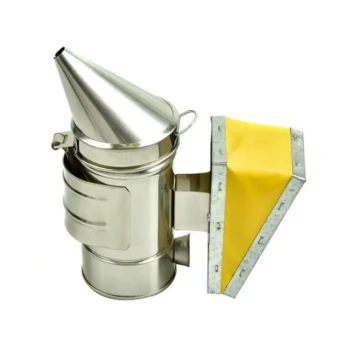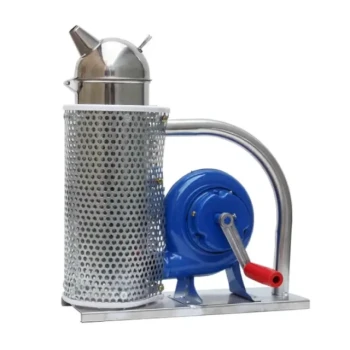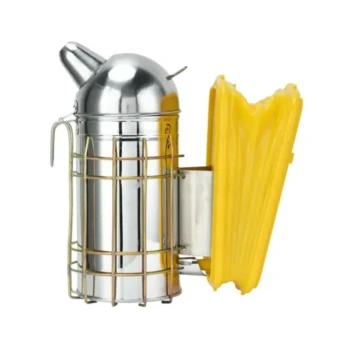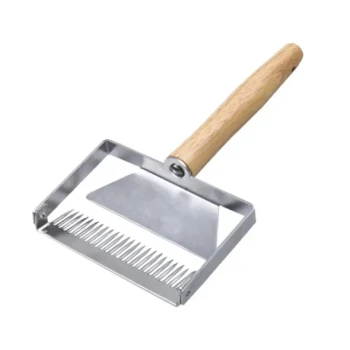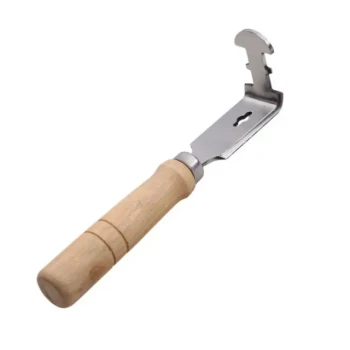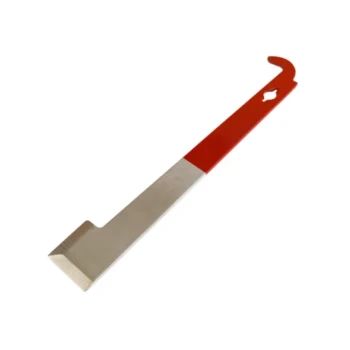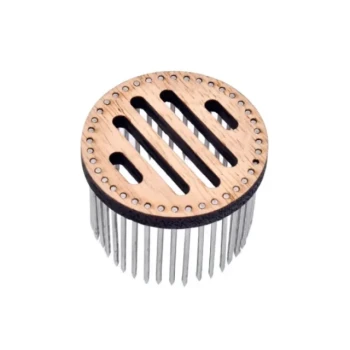The best fuel for a bee smoker is not a single material, but a strategic combination of two types. You need a fast-burning starter like crumpled newspaper or cotton lint to get the fire going easily, layered with a slower-burning, natural main fuel like pine needles, wood shavings, or burlap to produce the cool, long-lasting smoke required for calming bees.
The key to effective hive management isn't finding one perfect fuel, but mastering the technique of layering a quick-to-light starter with a slow-to-smolder main fuel. This creates the ideal cool, thick, and consistent smoke that safely pacifies your colony.

The Anatomy of Bee Smoker Fuel
A successful smoker fire is built in layers, each with a specific job. Understanding the role of each component is crucial for getting a long, consistent burn without having to constantly relight it.
The Starter Layer: Fast Ignition
Your first layer must be something that catches fire instantly. Its only purpose is to create enough heat to ignite the main fuel above it.
Common starters include crumpled newspaper, cardboard egg cartons, dryer lint, or dried deciduous leaves. These materials ignite with minimal effort from a match or lighter.
The Main Fuel: A Slow, Steady Smolder
This is the most important layer. The goal here is a material that doesn't burst into flames but instead smolders, producing thick, cool, white smoke for an extended period.
Excellent main fuels are natural and untreated. Pine needles are a classic choice, as are wood shavings (not sawdust), burlap strips from untreated sacks, and cotton fibers or fabric scraps.
Optional Additions: Aromatics
Some beekeepers add specific materials on top for a more pleasant scent. This is not required for function but can improve the experience.
Materials like dried citrus peels or dried, non-toxic herbs can be mixed in with your main fuel to produce a more fragrant smoke.
The Art of Lighting Your Smoker
The process is more important than the specific materials. A well-lit smoker will stay lit for the duration of your hive inspection.
Step 1: Prepare the Chamber
Before adding new fuel, always clean out old ash and residue from the smoker's fire chamber. This ensures proper airflow, which is essential for keeping the fire smoldering.
Step 2: Ignite the Starter
Place a loose handful of your starter material (like a ball of newspaper) into the bottom of the chamber. Light it with a match or lighter while gently puffing the bellows. The bellows supply the oxygen needed to build a small, hot fire.
Step 3: Gradually Add Main Fuel
Once the starter is burning well, begin adding your main fuel (like pine needles) a little at a time. Continue puffing the bellows with each addition to ensure the new fuel catches.
Step 4: Tamp and Test
Continue adding fuel until the chamber is nearly full. Use your hive tool to gently tamp the fuel down. This compaction prevents open flames and promotes a smolder. The smoker is ready when it produces a steady stream of cool, white smoke even without puffing the bellows.
Understanding the Trade-offs and Pitfalls
Using a smoker correctly is a matter of safety for both you and your bees. The quality of your smoke is more important than the quantity.
Why Cool, White Smoke is Critical
Hot smoke or flames will harm your bees, making them agitated and aggressive rather than calm. Tamping the fuel down is the key to preventing flames and ensuring the smoke is cool enough for the hive.
The Danger of Contaminants
Never burn synthetic materials, plastic, pressure-treated wood, or anything containing glue, ink, or chemicals. These can release toxic fumes that can poison your colony and contaminate your honey. Stick to clean, dry, natural materials.
The Principle of Moderation
The purpose of smoke is to mask the bees' alarm pheromone, not to overwhelm the hive. Over-smoking can be harmful to the bees' respiratory systems and your own. A few gentle puffs at the entrance and under the cover is usually all that is needed.
Making the Right Choice for Your Goal
The "best" fuel often depends on what is readily and sustainably available in your area.
- If your primary focus is convenience: Use readily available materials like newspaper for a starter and dried pine needles, grass clippings, or small twigs from your yard as the main fuel.
- If your primary focus is the longest possible burn: Choose denser materials like wood shavings or burlap, ensuring they are well-layered and firmly tamped over a strong starter fire.
- If your primary focus is a clean and pleasant burn: Prioritize materials like untreated cotton fibers, dried herbs, or citrus peels, which produce minimal creosote and a more agreeable aroma.
Mastering your smoker is a fundamental skill that transforms hive inspections from a stressful event into a calm, controlled process.
Summary Table:
| Fuel Type | Purpose | Examples |
|---|---|---|
| Starter Layer | Fast ignition to create initial heat | Crumpled newspaper, dryer lint, cardboard |
| Main Fuel | Slow, steady smolder for cool, thick smoke | Pine needles, wood shavings, burlap strips |
| Aromatics (Optional) | Adds a pleasant scent to the smoke | Dried citrus peels, non-toxic herbs |
Master hive management with the right equipment. As a trusted wholesale supplier to commercial apiaries and distributors, HONESTBEE provides the durable, reliable beekeeping supplies you need for efficient and safe operations. Let us help you equip your business for success. Contact our expert team today to discuss your wholesale needs.
Visual Guide
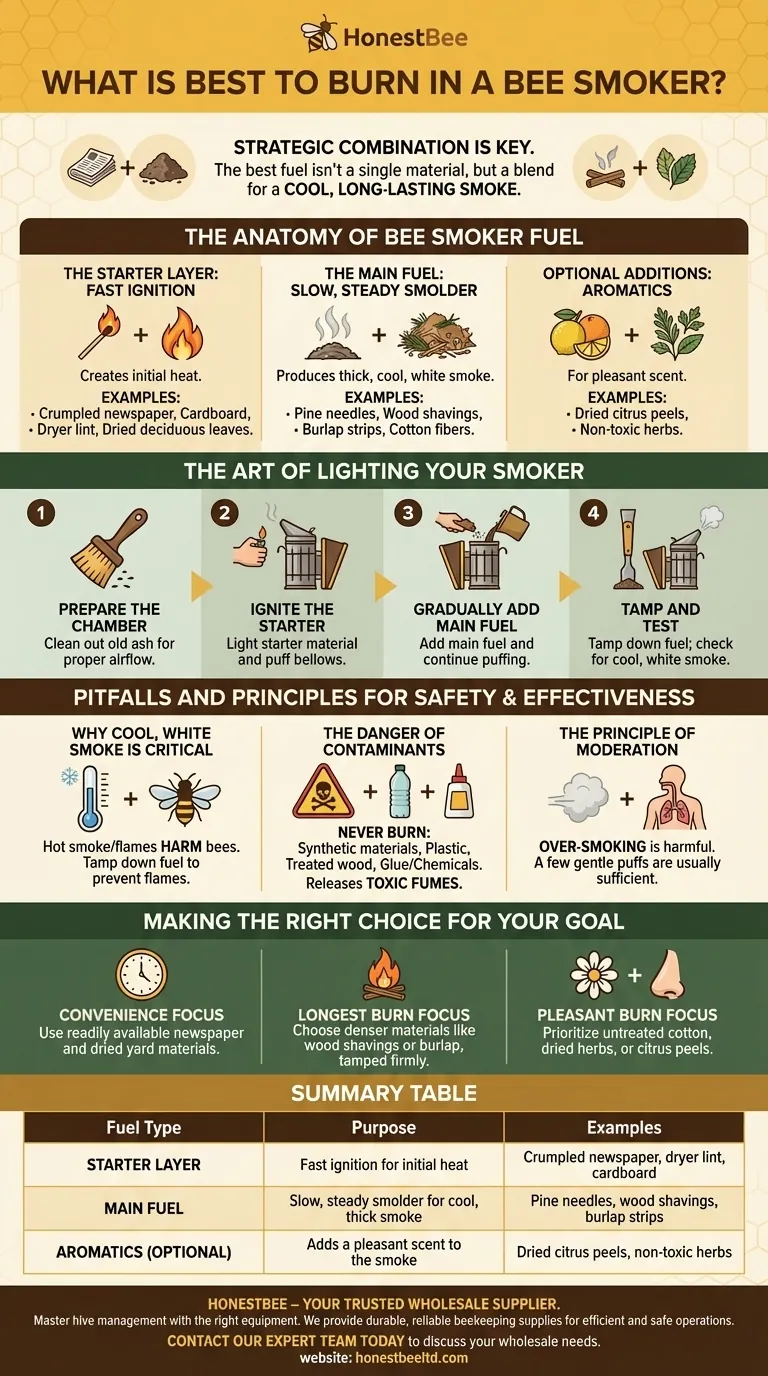
Related Products
- 54-Piece Smoker Fuel Pellets for Beekeeping Beehive Smoker Fuel
- Miniature Stainless Steel Bee Smoker for Beekeeping
- European Stainless Steel Bee Smoker for Honey Bee Hive
- Premium Traditional Copper Bee Smoker with Bellows
- Stainless Steel Honey Bee Smoker Hive and Honeycomb Smoker for Beekeeping
People Also Ask
- What to put in a bee hive smoker? A Guide to Natural, Calming Fuels
- What is the best material for a bee smoker? Choose the Right Fuel for a Calm Hive
- What is the importance of fuel in a bee smoker? Ensure Cool, Calming Smoke for Your Hive
- What is the best bee hive smoker fuel? Choose Natural, Slow-Burning Fuel for Calm Bees
- What can I use for bee smoker fuel? Choose Safe, Natural Materials for a Calm Hive

